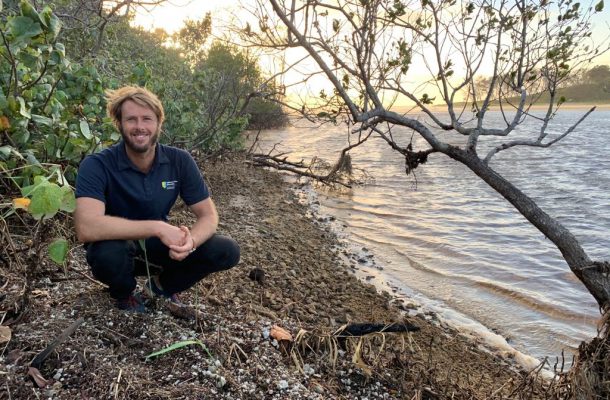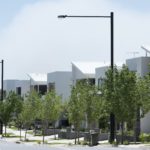A bright future for blue carbon

As part of the Emission Reduction Fund (ERF) under the Carbon Credits (Carbon Farming Initiative) Act 2011, farmers, businesses and industries can earn Australian carbon credit units by establishing and rehabilitating ecosystems such as mangroves, salt marshes, seagrass and melaleuca forests that sequester carbon.
These units can be sold or traded to generate revenue. Before now, accurately calculating this sequestration has been problematic.
Dr James Sippo and Professor Damien Maher from the University’s Faculty of Science and Engineering have worked closely with project lead Professor Catherine Lovelock from the University of Queensland and a team of leading scientists from universities around the country to develop the BlueCAM model.
BlueCAM targets low lying coastal land which has been drained for agriculture. Under the model, land owners can benefit from letting natural rehabilitation of these ecosystems occur.
“As part of this research project, I developed a calculator that landowners will use to input information about their property such as the original land use, site elevation and blue carbon vegetation that develops naturally once tidal activity resumes. The calculator takes these inputs and works off a national dataset to calculate carbon credits for each project without having to undertake costly on-site carbon measurements,” Dr Sippo explained.
“It’s been a national effort, with a team of 13 blue carbon researchers working around the country from all different climate zones to make sure we developed an accurate model,” he said.
Following the Paris agreement, Australia aims to reach net zero emissions by 2050. The ERF is part of a national strategy to increase the uptake of greenhouse gases in vegetation and soil, which can offset emissions from other sectors.
“Blue carbon ecosystems punch above their weight when it comes to natural carbon sequestration. The incorporation of BlueCAM into government accounting will encourage restoration of these systems,” said Professor Maher.
“Many areas of low-lying grazing, cropping, and sugar cane cultivation are marginal, that is they do not return a profit for the farmer. With BlueCAM, farmers now have the potential to restore these important ecological areas, and receive a financial return for doing so,” said Dr Sippo.
“For example, a single farm of 100 hectares of flooded grazing land converted to mangroves could sequester up to 4,700 tonnes of CO2 equivalents per year,” he said.
Historically, carbon credit systems around the world have been fraught with issues, however BlueCAM was carefully constructed by Australia’s leading blue carbon research scientists, and is intentionally conservative in its estimates of carbon uptake.
“The University has a long history of expertise in blue carbon research. We are confident that land owners using this method will be making a positive change to Australia’s carbon footprint, while also providing many other environmental benefits associated with coastal wetland restoration,” Professor Maher said.
Open Forum is a policy discussion website produced by Global Access Partners – Australia’s Institute for Active Policy. We welcome contributions and invite you to submit a blog to the editor and follow us on Twitter, Facebook, Linkedin and Mastadon.









